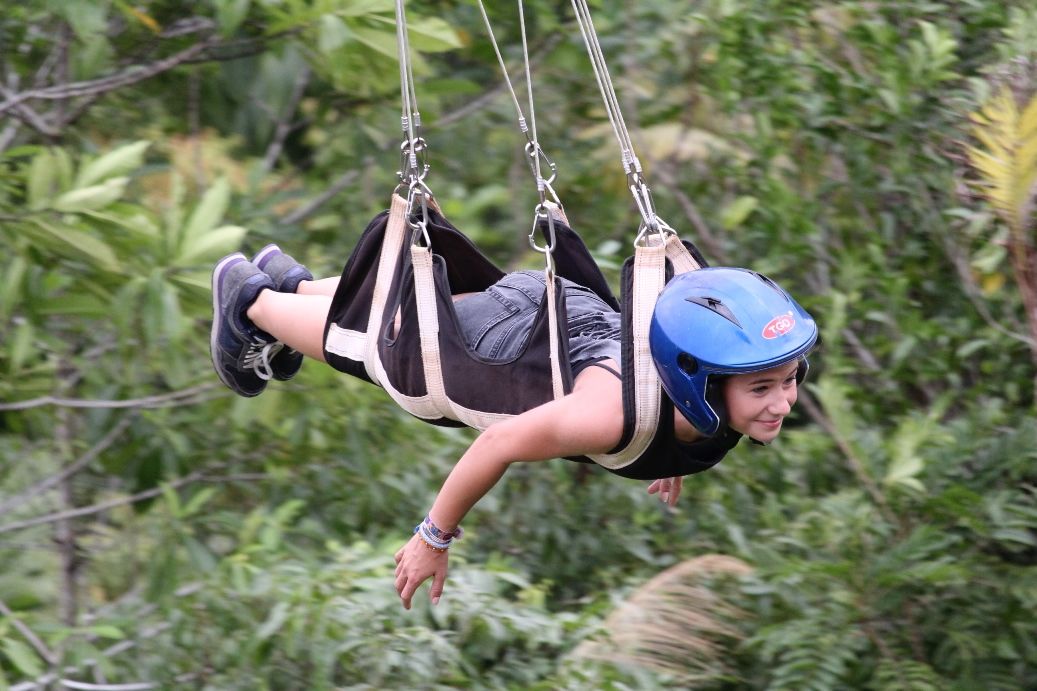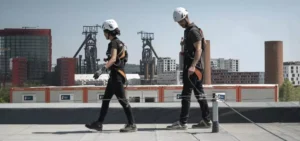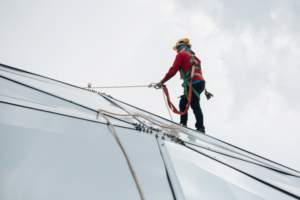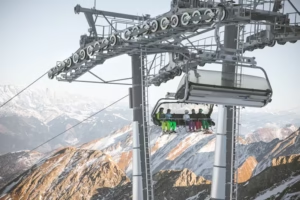The Philippines, with its lush mountains, pristine beaches, and breathtaking landscapes, has become one of Asia’s top destinations for eco-adventure and outdoor recreation. Among the most exciting attractions drawing tourists to these natural wonders are ziplines—offering the exhilarating experience of soaring above forests, valleys, and coastlines. As more resorts, theme parks, and tourism hubs embrace adventure tourism, the demand for a professional zipline contractor solution Philippines continues to grow. These expert contractors ensure that every zipline project combines excitement, safety, and sustainability, allowing both locals and travelers to enjoy unforgettable experiences while boosting the local economy.
The Growing Popularity of Ziplines Across the Philippines
Ziplines have become synonymous with adventure tourism in the Philippines. From the highlands of Bukidnon and Bohol to the beaches of Palawan and Siargao, zipline attractions offer an unparalleled thrill and a fresh perspective of the country’s scenic beauty. The rise of outdoor and eco-tourism has encouraged local communities and business owners to invest in such experiences, transforming once-quiet areas into thriving destinations. These aerial rides not only attract adrenaline seekers but also families and tourists looking for something unique and memorable.
With government and private partnerships supporting eco-tourism initiatives, ziplines have become more than just entertainment—they serve as tools for local livelihood and community development. However, creating a safe, high-quality zipline requires more than enthusiasm; it demands technical expertise, engineering precision, and adherence to strict safety standards. That’s where a professional zipline contractor solution Philippines becomes essential, bridging the gap between concept and construction to deliver exceptional adventure experiences that stand the test of time.
What a Zipline Contractor Solution in the Philippines Offers
A zipline contractor solution Philippines provides a complete package of services tailored to adventure park operators, resort developers, and tourism investors. These specialized contractors handle every stage of development—from initial site inspection to post-installation maintenance—ensuring that each project meets safety, aesthetic, and operational standards.
Typically, services include:
- Concept and site design based on topography and environment
- Engineering and safety assessment
- Sourcing and installation of high-grade materials and equipment
- Staff training and operational guidance
- Routine inspection and maintenance services
By working with certified professionals, project owners can avoid costly design flaws and safety risks. Reputable contractors also provide peace of mind by ensuring compliance with local regulations and international zipline safety codes. Their holistic approach ensures every zipline is both thrilling and dependable—offering adventure without compromising safety.
Key Features of a Reliable Zipline Contractor Solution
The best zipline contractor solution Philippines stands out through technical excellence, robust safety measures, and dependable after-sales support. Engineering precision is at the core of every project, as even minor miscalculations can impact the rider’s safety and experience. Reliable contractors use only high-quality materials suited for the Philippines’ tropical climate, including corrosion-resistant cables, durable harnesses, and weatherproof fittings.
Safety compliance is another major factor. Professional contractors ensure every structure meets local and international standards, often consulting with the Department of Tourism (DOT) and engineering experts. Furthermore, maintenance and inspection routines are scheduled regularly to keep the structure in optimal condition. These safety protocols not only protect riders but also enhance customer trust, a key element in building a successful adventure attraction.
Equally important is the after-installation support. Contractors that provide continuous inspection, system upgrades, and retraining for staff help ensure the long-term reliability of the facility.
Step-by-Step Process of Developing a Zipline Attraction
Building a zipline is an intricate process that combines creativity, technical skill, and logistical planning. It begins with a comprehensive site assessment to evaluate natural landscapes, elevation, and environmental conditions. Engineers and designers then calculate the distance, slope, and weight capacity to create a blueprint that ensures safety and optimal performance.
Once the design is approved, equipment sourcing and installation begin. High-quality cables, pulleys, and harness systems are selected and carefully tested. The construction team ensures that the installation minimally impacts the surrounding environment. After setup, the zipline undergoes rigorous testing and certification, ensuring every ride meets safety requirements.
Before opening to the public, staff training is conducted to educate operators on safety procedures, emergency protocols, and customer assistance. This thorough, step-by-step approach ensures that every project not only meets expectations but exceeds them, creating a top-tier adventure attraction that resonates with guests.
The Role of Safety and Engineering Standards in Zipline Construction
Safety is non-negotiable in zipline construction. The engineering behind every ride must meet precise standards, ensuring durability and stability even under intense conditions. Contractors integrate essential safety features such as high-tensile cables, redundant braking systems, secure anchor points, and emergency stop mechanisms.
Routine inspections are also mandatory, involving visual checks, tension tests, and system recalibration. By following international guidelines such as ACCT (Association for Challenge Course Technology) standards, zipline contractors in the Philippines ensure that every installation offers peace of mind to both operators and riders. These visible safety measures build public confidence and strengthen a destination’s reputation for responsible adventure tourism.
How Zipline Contractor Solutions Help Resorts, Parks, and Tourism Sites
For resorts and tourism parks, partnering with a zipline contractor solution Philippines is a smart investment. Ziplines not only elevate the excitement factor of a destination but also increase visitor numbers and overall profitability. Adventure seekers are often willing to travel great distances for unique experiences, and a well-built zipline can become the centerpiece of a resort or eco-park.
Business benefits include:
- Higher foot traffic and increased visitor retention
- Expanded market reach through adventure tourism promotions
- Enhanced brand reputation and customer loyalty
- Opportunities for cross-selling activities such as hiking or canopy tours
Beyond financial gains, zipline attractions help diversify the tourism experience, positioning destinations as must-visit locations for adventure enthusiasts while promoting responsible recreation and environmental appreciation.
Sustainability and Eco-Friendly Practices in Zipline Construction
Modern zipline contractors in the Philippines prioritize sustainability in every project. During construction, they aim to minimize environmental disturbance by using non-invasive anchors and preserving existing vegetation. Eco-friendly materials and low-impact engineering techniques help reduce the project’s carbon footprint.
Additionally, reputable contractors often collaborate with local communities, employing residents and training them as maintenance staff or guides. This approach fosters local empowerment and promotes responsible tourism. Through sustainable practices, zipline attractions not only entertain but also educate visitors about environmental conservation and cultural respect.
Choosing the Right Zipline Contractor in the Philippines
Selecting the right zipline contractor solution Philippines requires careful research and evaluation. Experience should be a top consideration—look for contractors with a proven track record of successful projects in various terrains. Review their certifications, safety standards, and previous client testimonials.
Other factors to assess include:
- Understanding of local geography and weather patterns
- Transparent pricing and contract terms
- Comprehensive warranties and post-installation services
- Accessibility for future maintenance and support
A trusted contractor ensures that the project runs smoothly from concept to operation, minimizing risks and maximizing performance. With the right partner, investors can confidently develop a world-class zipline attraction that delivers excitement and long-term returns.
Common Challenges in Zipline Installation and How Contractors Overcome Them
Building a zipline in the Philippines comes with its unique set of challenges, from rugged terrain to unpredictable weather conditions. Skilled contractors overcome these issues through smart engineering solutions such as reinforced anchor systems, weather-resistant materials, and innovative design layouts that adapt to the environment.
Logistics also play a crucial role, especially when building in remote or island locations. Professional contractors coordinate equipment transport, installation, and testing efficiently, ensuring projects stay on schedule. By combining technical expertise with adaptability, zipline contractors ensure that every project achieves both safety and aesthetic excellence.
The Future of Zipline Attractions in the Philippines
The adventure tourism industry in the Philippines is entering an exciting new era. Future zipline designs are expected to incorporate technology-driven safety features, such as automated braking systems, real-time monitoring, and even virtual reality integrations. Additionally, the growing trend toward sustainable tourism is encouraging more eco-friendly, community-centered projects.
With continuous innovation and an increasing demand for unique experiences, the role of professional zipline contractor solution Philippines will only grow more vital. They are shaping the future of outdoor recreation, blending adrenaline, safety, and sustainability into one unforgettable experience.
Frequently Asked Questions (FAQ)
Q1: What is included in a zipline contractor solution in the Philippines?
A: It typically includes design, engineering, installation, safety certification, staff training, and long-term maintenance.
Q2: How long does it take to build a commercial zipline attraction?
A: Depending on the site and complexity, it can take anywhere from a few weeks to several months.
Q3: Are there specific safety standards required for zipline construction?
A: Yes, contractors must adhere to both local tourism regulations and international safety standards such as ACCT guidelines.
Q4: Can zipline installations be customized for resorts or private properties?
A: Absolutely. Designs can be tailored to fit different landscapes, lengths, and adventure levels.
Q5: How can businesses ensure the longevity and safety of their zipline setup?
A: Regular inspections, maintenance, and staff retraining are essential to sustain long-term safety and performance.
Takeaway
The zipline contractor solution Philippines plays a crucial role in transforming natural landscapes into exciting and sustainable adventure destinations. Through engineering expertise, safety excellence, and eco-friendly design, these contractors help tourism developers and resort owners bring their visions to life. For anyone looking to build a zipline attraction, partnering with a trusted professional ensures that every ride delivers not only a thrilling experience but also lasting value and reliability.







